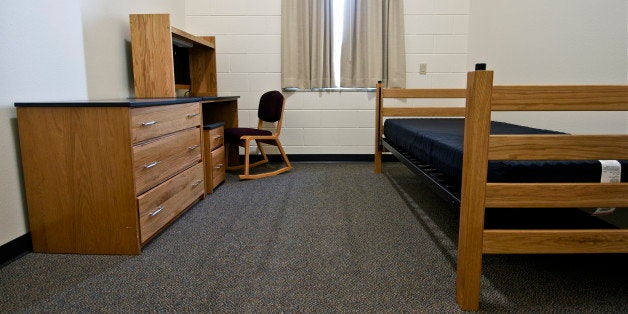
This article comes to us courtesy of U.S. News & World Report, where it was originally published.
Dorm living is a rite of passage for students at most four-year colleges. But community college students have largely missed out on that experience – until recently.
About 25 percent of two-year colleges in the U.S. now offer on-campus housing, according to data from the American Association of Community Colleges.
Between 2000 and 2010, 43 community colleges added new student housing, the association reports. And that figure continues to grow.
Rose State College in Oklahoma broke ground on its first residence hall in September. Jefferson Community College in New York opened its first residence hall last year. And, this fall, Northampton Community College in Pennsylvania will, for the first time, welcome local students into a newly constructed dormitory.
Omar McGill, 19, is excited about moving into Northampton's new dorms.
[Learn how to make the most of the community college experience.]
McGill currently lives with his mom about 15 minutes from campus but, without a car, he relies on the city bus to get to and from school. That means a lot of early mornings and late nights for McGill.
"Cashing in on some sleep," he says, when asked what he's most looking forward to about living in the dorms. Having a roommate and being close to his friends are also high on the list.
Dorms aren't a new thing at Northampton –- the two-year college opened its first in 1986 –- but space was always reserved for out-of-state and international students, says Mark Erickson, the school’s president.
[Explore housing options for international community college students.]
Supply wasn't meeting demand, though, Erickson says, and interest from local students was growing.
And student engagement is key to student success, notes Erin Wheeler, a learning consultant with the Center for Academic Success at Louisiana State University.
"In 4-year institutions, students who live on campus have higher retention rates than students who do not,Wheeler said via email. "Living on campus provides students with opportunities and support they would miss if they were commuting and living at home."
Adding dorms, then, is a logical move for community colleges trying to boost student retention and graduation rates, Wheeler says.
Putting up a residence hall isn't sufficient, though. Community colleges that add dorms also have to adjust school services to cater to students who are on campus 24/7, notes Susan Salvador, vice president for enrollment and student affairs at Northampton.
Northampton is building a dining hall along with the school's newest dorm, adding evening and weekend activities, and extending hours at the gym and other campus facilities. The school is also considering a van service to transport students to the movies and other activities off campus, Salvador says.
"This is such an important opportunity, for community college students to live on campus," she says. "Having the opportunity to live and learn at a two-year college really broadens that college experience."
It also helps community colleges appeal to recent high school graduates who want to save money without sacrificing the traditional college experience, says Willy Duncan, president of Sierra College in California.
[Avoid five costly financial aid mistakes community college students make.]
Sierra College was one of the first two-year colleges in the state to open dorms, and initially did so because the school was in a rural area.
"It's become part of the culture," Duncan says, adding that some students choose Sierra College because it offers on-campus housing. "They can get the best of both worlds."
But the resident experience comes at a cost. On-campus living at Sierra costs $3,600 per semester, which includes a $60-per-week meal plan and utilities, with the exception of phone and cable. At Northampton, the rate for each student in a two-person room is $2,500.
To keep housing affordable, most residence halls are traditional dorm style, which Erickson admits doesn't always work for nontraditional students –- especially those with families. "It's really targeted at the traditional-aged student," he says, noting that in the past most residents were single and in their 20s or early 30s, at the oldest. While some key demographics –- single parents, for example -– may not benefit from on-campus housing at community colleges, schools such as Sierra College have set aside housing for other nontraditional students. Sierra holds rooms for former foster youth, Duncan says. And Erickson hopes Northampton's new dorms will allow the college to offer housing for short-term summer programs aimed at adult learners.
Trying to fund your education? Get tips, news and more in the U.S. News Paying for Community College center.
